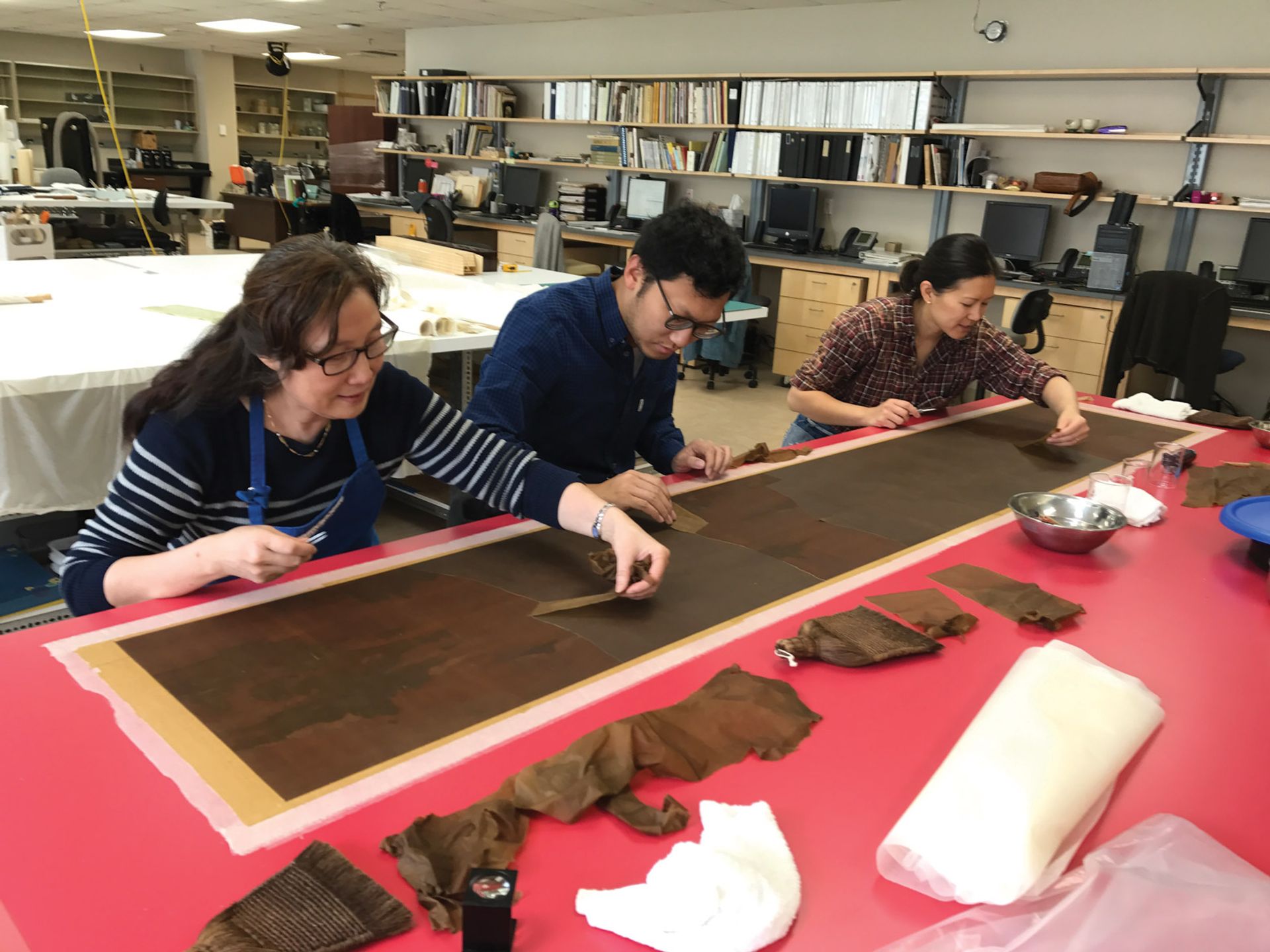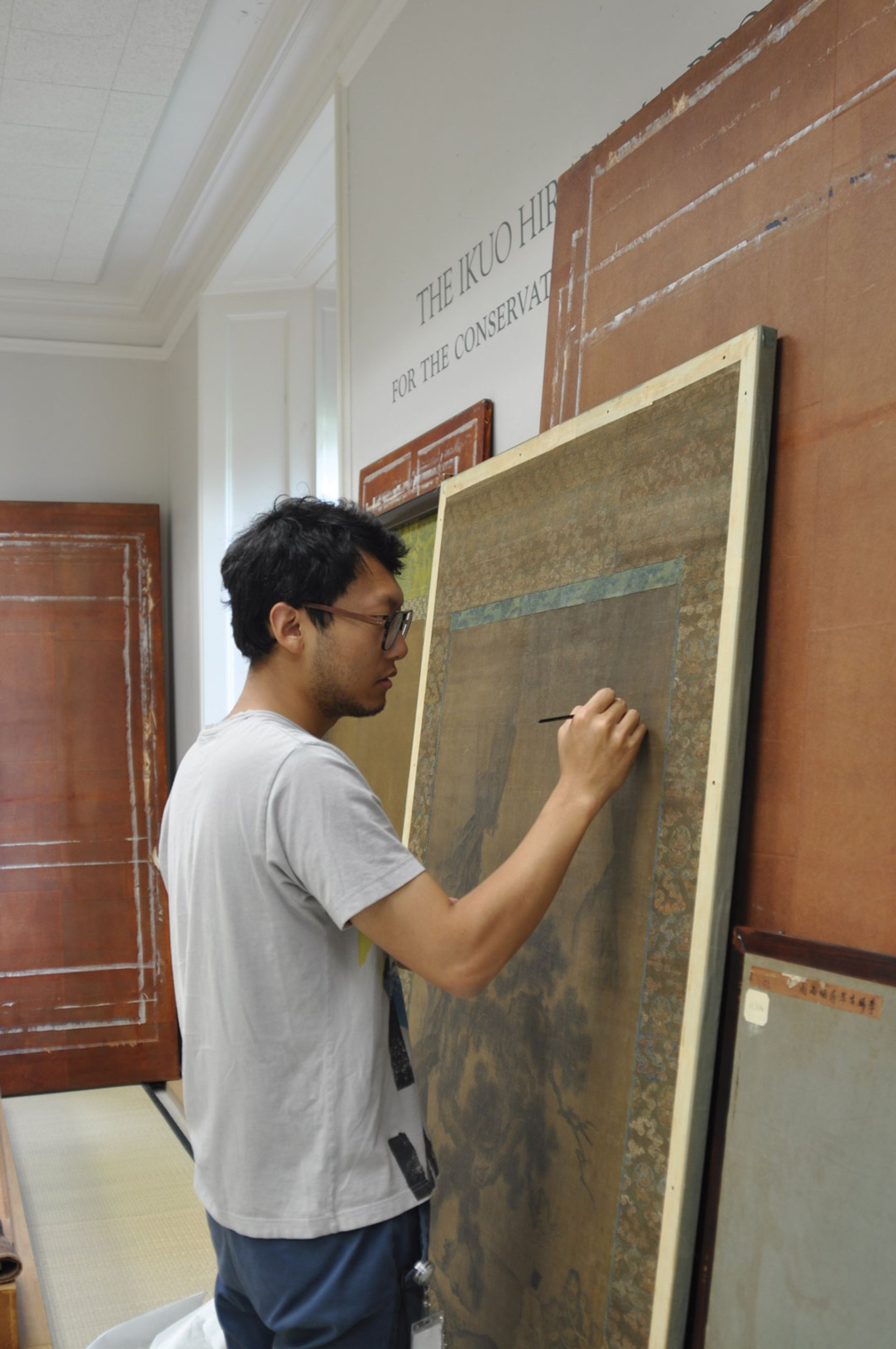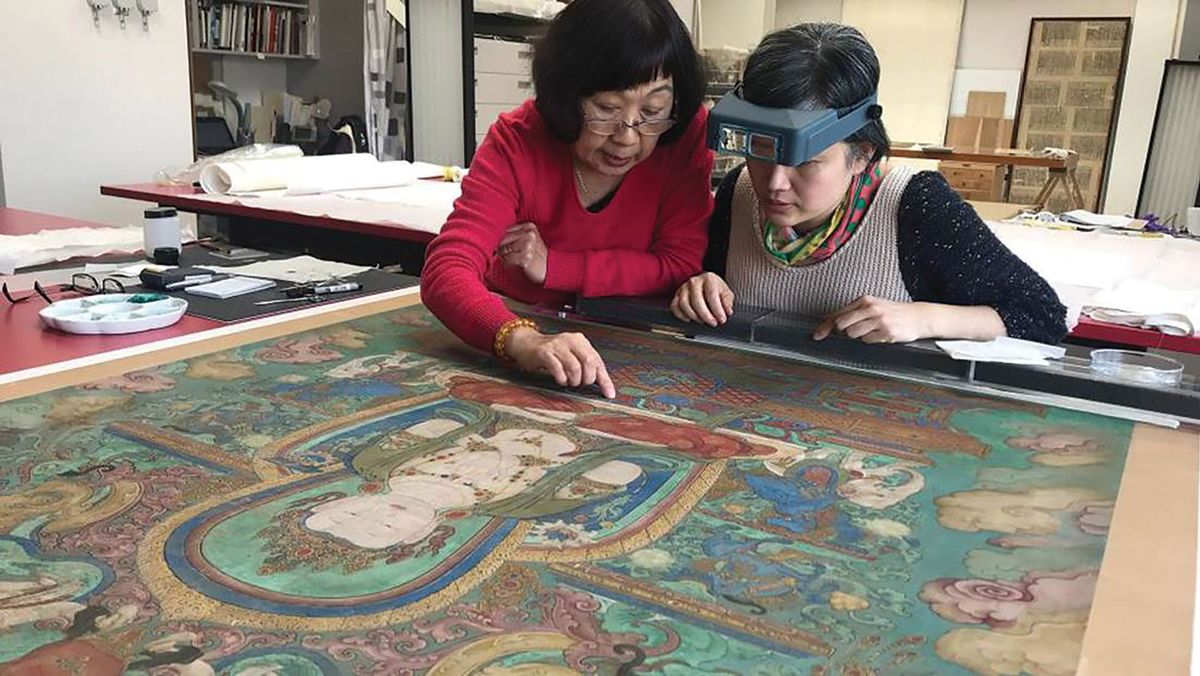Major grants promise to transform the field of Chinese painting conservation in US museums, which seemed threatened a decade ago. Back then, there were only four senior museum conservators nationwide with expertise. All were Chinese-born and had been trained in Beijing or Shanghai in the 1970s, when the arts were on the rise again after the intellectual and artistic setbacks of the Cultural Revolution. They were in their mid-to-late 50s, yet no younger specialists were emerging to take up their mantle.
“There was virtually no one in their 40s, no one in their 30s, and no one in their 20s training with them,” says Andrew Hare, the supervisory East Asian painting conservator at the Smithsonian Institution’s Freer Gallery and Arthur M. Sackler Gallery in Washington. “And we realised this was a problem. Unless we started training people soon, there would be a huge gap or a break in the tradition, and we’d potentially lose all of that knowledge, all of that experience.”
As those experts now approach retirement, new positions have been funded to assure conservation of the rich Chinese collections at the Freer/Sackler, the Metropolitan Museum of Art in New York, the Museum of Fine Arts (MFA), Boston and the Cleveland Museum of Art (CMA).
The Andrew W. Mellon Foundation, the Starr Foundation and other philanthropic organisations have played a fundamental role in securing this legacy. Last July, the CMA announced a $1.5m gift from a California couple, June and Simon K.C. Li, to match a $1.5m Mellon grant that establishes a centre for Chinese paintings conservation. With the help of the Mellon largesse, master conservators from Beijing and Shanghai have been alternating in six-month stints to mentor the museum’s Chinese paintings conservator, hired in 2014.
The Seattle Art Museum is currently raising $2.5m to secure a $3.5m Mellon grant to set up an Asian paintings conservation centre. The hope is that the museum will share its expertise by treating paintings from other institutions in the western US.
The Mellon grants, totalling $11.2m from 2011 to 2017, “have made a huge difference”, says Hare, who now oversees two Chinese painting conservators at the Freer/Sackler. “They have changed the landscape, no question.”
Yet the fount of knowledge remains dependent on recruiting conservators from China and Taiwan. None of the graduate art conservation programmes in the US offers training in remounting Chinese paintings, and it is challenging for young Americans to commit themselves to the ten years of training needed under a master in Beijing or Shanghai.

Conservators remove a lining from a Chinese painting on silk Courtesy of Freer/Sackler
No easy route
“It’s just kind of sad to me,” says Jacki Elgar, the head of Asian conservation at the MFA Boston. “There’s no easy route. You kind of have to know or understand the painting that you’re working on to be able to treat it, and getting that kind of experience and knowledge is pretty difficult if you’re living in the United States.”
Conservators must be experienced in treating the thin and fragile paper or silk on which traditional Chinese paintings are made—knowing, for example, how to apply reinforcing strips to the back of a painting to repair creases or tears. Usually the paintings are backed with layers of paper to provide support while maintaining flexibility; sometimes a work needs to be completely remounted, which involves peeling away the old backing layers and then applying new ones with wheat starch paste cooked by the conservator.
A conservator may also painstakingly replace a painting’s silk border, dyeing new silks to match the work’s age and tone. And they must be adept at working with various formats—hanging scrolls, hand scrolls, albums—each with its own series of steps to be learned.
“Imagine a scroll that’s hundreds of years old that’s been opened and closed thousands of times,” Hare says. “There are going to be tears, there are going to be creases, and perhaps some of the pigment is starting to flake off and fall off the surface. These are the kinds of very typical problems we see.”
Conservators must also forge relationships with reliable suppliers of traditional silks and papers in China. “You have to know the producers so the quality meets our standard,” says Per Knutås, the chief conservator at the CMA (he has just accepted a position as head of conservation at the Museum of Fine Arts, Houston). “They’re custom-woven at times—we ask for specific patterns or weave densities.”
As their programmes have strengthened, the US conservators have remained in close contact with each other, pooling information on techniques and challenges when they meet in workshops. “We all work together and want to make sure that everyone in the field succeeds,” says Grace Jan, a Chinese paintings conservator at the Sackler/Freer. “This networking is not as common in China; here, there are so few people who enter the field that we’re all connected.”
As the sole US-born museum conservator in the field, Jan is something of an anomaly. The daughter of immigrants from Taiwan, she mainly spoke English growing up and had to enrol in a language programme to master Chinese. She graduated from the Conservation Center of the Institute of Fine Arts at New York University, where no-one had the knowledge to impart Chinese conservation techniques, and subsequently trained at the Palace Museum in Beijing and the Shanghai Museum as well as the Met and the MFA Boston.

Conservator infills tones on a silk in a lab at the Freer/Sackler in Washington, DC. Courtesy of Freer/Sackler
Two schools of thought
In China, Jan says, “the conservator, scientist and art historian are separate,” with conservators trained as apprentices solely to treat the painting. In the US, conservators are more likely to wrap art history and a scientific analysis of materials into their approach.
That reflects “two schools of thought”, Jan says. “One is being so skilled that you know it like the back of your hand; the other approach is more methodical—you have research, you have analysis. I’m somewhat in between. I’d like to do the work so well that I could do it in my sleep. But then there’s working with the painting to determine what its needs are, as opposed to just making it look good.”
Jan says conservators in China are more likely to entirely remount a painting than make small stabilising repairs. Elgar agrees. She says conservators in China may also resort to inpainting to fill in a hole in a painting that has obliterated, say, an eye in a face. “We would fill it with the original support material” from the back, she explains, “but we wouldn’t necessarily paint the eye back in. But in China, I believe they would try to replicate the eye.”
Yet Elgar reveres the traditions of the masters of Chinese painting conservation. The reason, she says, why traditional practices survive in China and Japan is “because they actually do work”.


